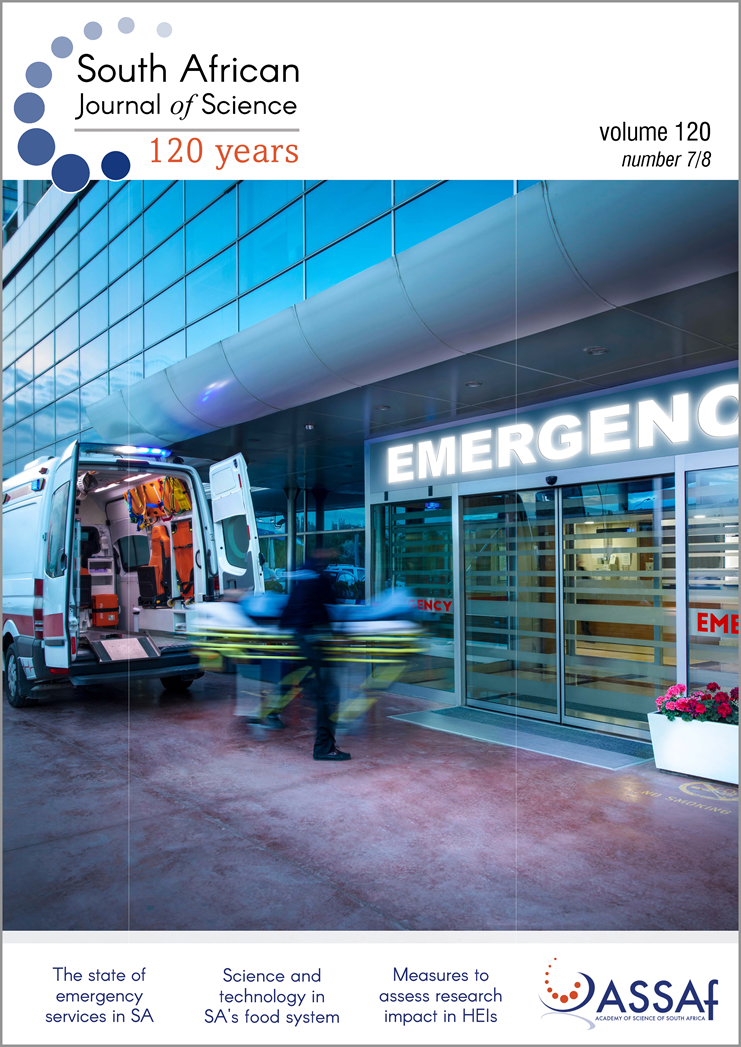Unidirectional dispersal of blow fly larvae following decomposition fluids from a pig carcass
DOI:
https://doi.org/10.17159/sajs.2024/17589Keywords:
forensic entomology, Chrysomya albiceps, Chrysomya chloropyga, larval migration, decompositionAbstract
The decomposition of a body, and the associated gaseous and liquid discharges emanating from it, attract gravid female blow flies which lay their eggs in or on the body. After the eggs have hatched, the emerging larvae start feeding on the body. As decomposition progresses, the blow fly larvae often migrate away, typically in a random manner in search of favourable conditions for pupation. In this paper, we report on a rarely described phenomenon of unidirectional mass migration of blow fly larvae and postulate on the factors which may drive this process. A decomposition trial utilising a 60-kg pig carcass, deployed in the summer months in Table Mountain National Park, Cape Town, South Africa, was conducted in 2022. On the fifth day of the trial, simultaneous unidirectional mass dispersal of blow fly larvae was observed. The larvae moved downhill in a southeasterly direction, following the flow of decomposition fluids oozing out from the pig carcass. The ‘larval migration stream’ had a length of approximately 1.5 m with a width of 40 cm, tapering to 17 cm at the terminal point. The larval migration stream consisted of the larvae of Chrysomya albiceps and Chrysomya chloropyga. This study demonstrates the importance of understanding the timing and pattern of dispersal of post-feeding blow fly larvae in each geographical region. This is crucial as the minimum post-mortem interval can be miscalculated if older immature insects dispersing from the corpse are not considered and collected during crime scene investigations.
Significance:
- Understanding the timing and pattern of dispersal of blow fly larvae from decomposing vertebrate remains in each geographical region is important in time-since-death estimations when using entomological evidence.
- In the summer season of the Western Cape Province, Chrysomya albiceps and Chrysomya chloropyga are among the blow fly species of forensic importance as they deposit their eggs on vertebrate remains.
- When a decomposing body is found within the Table Mountain region, we suggest that crime scene investigators should examine the downhill area of the scene for larval/pupal entomological evidence that can assist in time and season of death estimations.
Supplementary video 1: https://doi.org/10.6084/m9.figshare.26028766.v1
Supplementary video 2: https://doi.org/10.6084/m9.figshare.26028805.v2
Additional Files
Published
Issue
Section
License

All articles are published under a Creative Commons Attribution 4.0 International Licence
Copyright is retained by the authors. Readers are welcome to reproduce, share and adapt the content without permission provided the source is attributed.
Disclaimer: The publisher and editors accept no responsibility for statements made by the authors
How to Cite
- Abstract 470
- PDF 288
- EPUB 156
- XML 119
- Peer review history 40
Funding data
-
National Research Foundation
Grant numbers CSUR116299 -
University of Cape Town













.png)